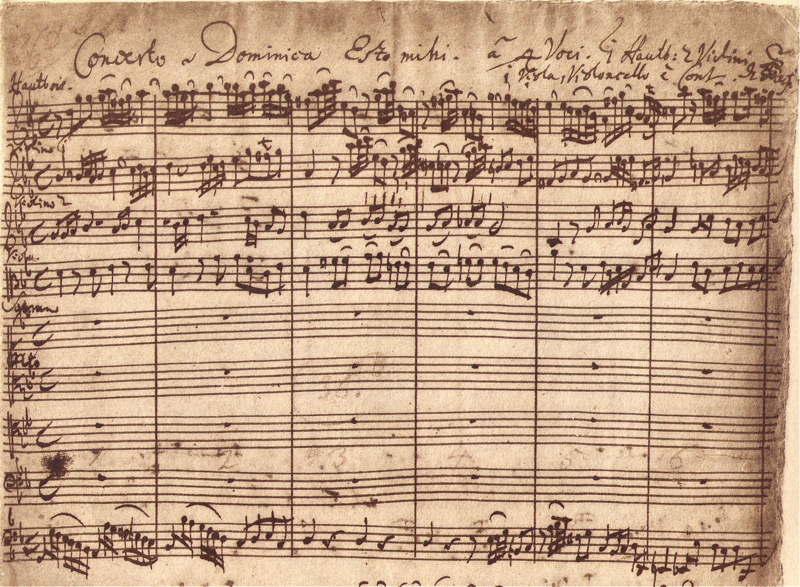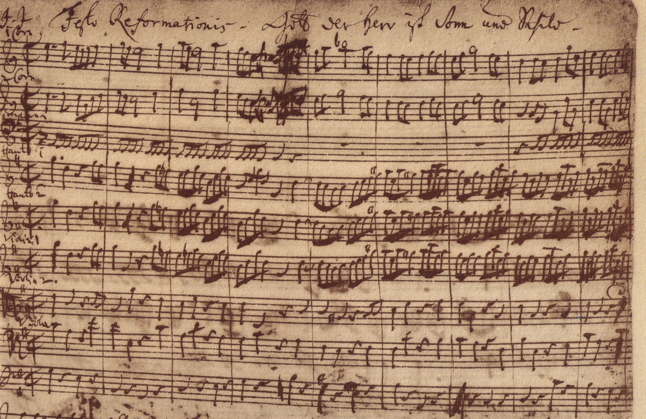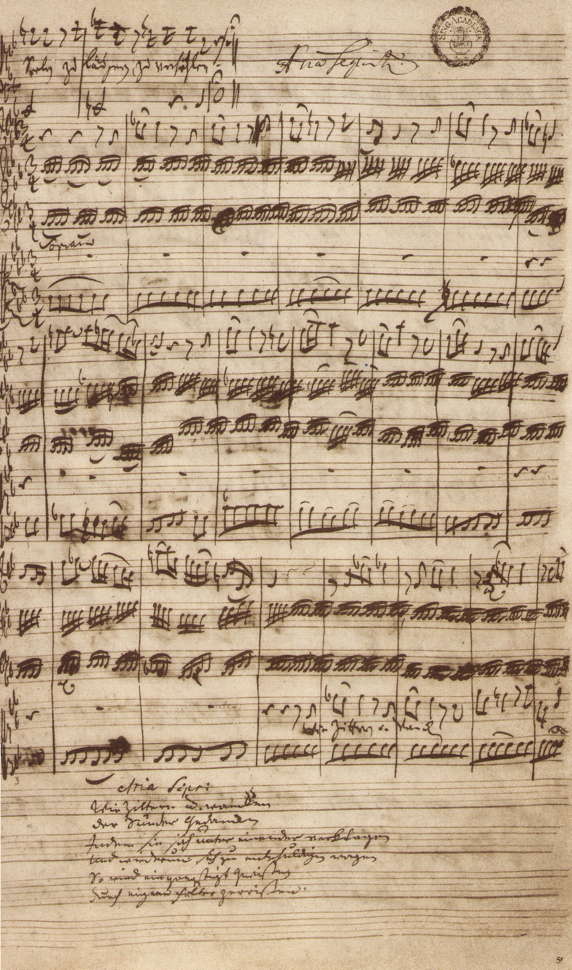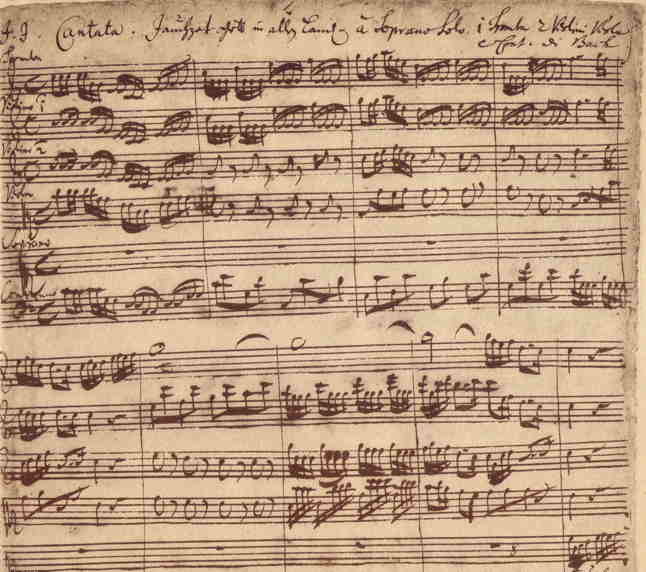Bach cantata
The cantatas of Johann Sebastian Bach in this genre have gained such a reputation that for it 's own bach cantata has naturalized.
As with all baroque cantatas are multi-movement musical work for (usually ) choir, orchestra and vocal soloists, for performance in worship ( church cantata ) or at a festive social occasion ( secular cantata ) were determined.
Function and structure of the church cantatas
Sunday after Sunday, it was one of Bach's duties to make music in worship a cantata, which was often newly composed by himself for the occasion. As a textual basis were related to the topic of the Sunday Bible texts or paraphrases about free contemporary poetry and carefully chosen hymns. A special case is the chorale cantata, based on the verses of a hymn.
In general, a cantata by Bach has the structure
- Opening chorus ( rare before or instead an instrumental introduction )
- Solo recitatives and arias ariosos, sometimes chorales
- Final chorus or choral
Performance practice
See also: Historical Performance Practice
Bach cantatas are today the repertoire of church music. In place of the liturgical context, the concert is mainly entered in the church, but the cantatas are also listed in worship cantata.
As Bach 1730 performs in a petition to the city council, he introduces himself as an ideal candidate for the performable in the Leipzig church music three to four singers per voice before. His " Kurtzer, iedoch höchstnöthiger Entwurff a comfortably installed churches music" was entirely reinterpreted by musicologists Joshua Rifkin and Andrew Parrott. Accordingly Bach have listed his cantatas usually with a solo quartet, which carried out all solo tasks and strong instrumental ensemble ( ie primarily, but not only, in choral movements ) was supported by each one to two more singers; two to three to first violins, two second, one to two violas and a very heavily infested by today's standards continuo. Today's traditional strong separation between solo and choral tasks have thus failed in this form. Other representatives of historical performance practice as Ton Koopman, however, have disputed this theory and set to be a small choir. A purely solo performance had still been ideal in Bach neither rule.
System
Bach - Werke-Verzeichnis
The Bach - Werke-Verzeichnis ( BWV ) by Wolfgang Schmieder recorded about 200 cantatas of Bach, to some works, which are now attributed to the research of other composers. The numbering of Bach Cantatas BWV is in neither chronological nor systematically because Schmieder followed the random numbering, which had been established by the Bach Complete Edition, and shares only one in spiritual ( BWV 1-200 ) and secular cantatas ( BWV 201-216 ) as well as those in which the authorship of Bach is doubtful ( BWV 217-224 ).
Bach Compendium
The Bach Compendium (BC ) takes the following grouping of the Bach cantatas based on the occasions when they were written:
- Cantatas for the Sundays and feast days of the liturgical year (BC -works Group A )
- Church pieces for special occasions (BC- plant group B)
- Secular Cantatas for court, nobility and bourgeoisie (BC- plant group G)
Chronological Overview
After emergence time, Bach's cantatas are divided as follows:
- Early Cantatas from the Arnstadt and Mühlhauser time (up to 1709), for example, BWV 150 ( Bach cantata, the oldest if known ), 4, 131, 106, 196
- Cantatas of the Weimar period ( until 1717), for example, BWV 61, 162, 182
- Cantatas of the Leipzig period (from 1723): First Year 1723/24, for example, BWV 105
- The " chorale cantatas vintage " 1724/25, for example, BWV 1
- Third year 1725/26, for example, BWV 19
- Late cantatas ( 1730 - years), for example, BWV 140
To the BWV numbers see Bach - Werke-Verzeichnis










